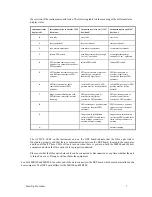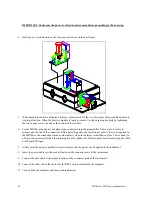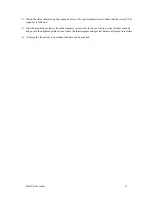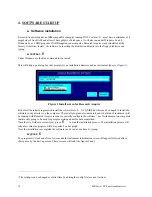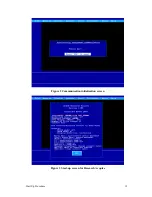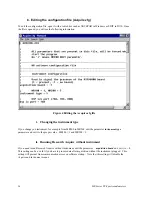
Start-Up Procedure
21
c. HANDLING AND CARE
The handling and care of the different halide components is not very difficult, but it does require a conscious
effort to be made by the user to follow the suggested guidelines. Some suppliers of these optical materials had
been contacted and their procedures for handling of such elements have been reviewed and are restated here for
clarity. These guidelines, if followed religiously, will help to preserve the optical materials that may be damaged
so that such materials may be maintained for years without moisture damage.
The handling and care of the optical materials has been divided into three sub-sections pertaining to care for
these materials under most conditions, and are as follows: handling, storage, and transport.
i. Handling of components
The handling of materials, that are hygroscopic in nature, must be made with care. The main prerequisite being
that the environment in which the halide materials are exposed be maintained at less than 35% relative humidity.
[See Appendix I.4 for discussion of relative humidity.] Do not expose a component whose temperature is below
that of the ambient temperature, and allow at least 24 hours to ensure that the ambient temperature is reached. In
general, all storage, installation, and use should be done in a temperature and humidity controlled environment,
and carried out by qualified personnel familiar with the handling of such components.
When handling the components, any personnel in contact with the materials should wear a face mask and full
surgical gloves. This is necessary to avoid the inevitable amounts of moisture that will be present on skin or
from human breath. Never breathe directly on or near the optical surfaces. Only the outer edge of the material
should be handled and can be carefully wiped using a clean tissue and isopropyl alcohol to remove any talcum
powder, lint, finger oils, or moisture that may collect during handling. Note that; unused solvents should be
discarded as they have a high affinity to absorb water vapor from the air, and, also, materials that are likely to
absorb moisture (tissues, tape, clothing, etc.) should be removed from close proximity of the optical materials.
ii. Storage conditions
1. Optical materials
When the optical materials (that are hygroscopic) are not in use, it is recommended that the components be
stored in a warm dry place. The relative humidity should always be maintained below at least 35%. [See
Appendix I-4 for discussion of relative humidity.] The preferred storage location would be a heated desiccator
cabinet or else an enclosure that is purged with a dry oil free gas (N
2
.) Avoid placing any materials that may
retain moisture near the optical components or inside the enclosure at all, if possible. The materials may also be
sealed (airtight) in a plastic storage envelope with a suitable desiccant whose condition should be monitored
periodically.
In practice, such cabinets or enclosures and the ability to seal the components are not always readily available. In
later case, care must be taken to ensure that the optical materials are safely stored. The optical materials can be
stored in their original shipping containers with suitable desiccant material and heating above ambient
temperature level.
Desiccants
A desiccant is a material that will strongly absorb moisture from the air and can, therefore, minimize the
atmospheric level of moisture within a confined volume for effectiveness. The desiccant material comes in a
variety of forms. In environments where the storage location is not well controlled, a desiccant that changes
color with increasing absorption of water is a very good indicator of humidity levels encountered by the optical
material. An appropriate amount of desiccant material, usually in a pouch or capsule, should be stored near the
optical material and this amount will depend on the actual volume and level of dryness required which may vary
from application to application. A maintenance schedule should be made by the user to observe that the

